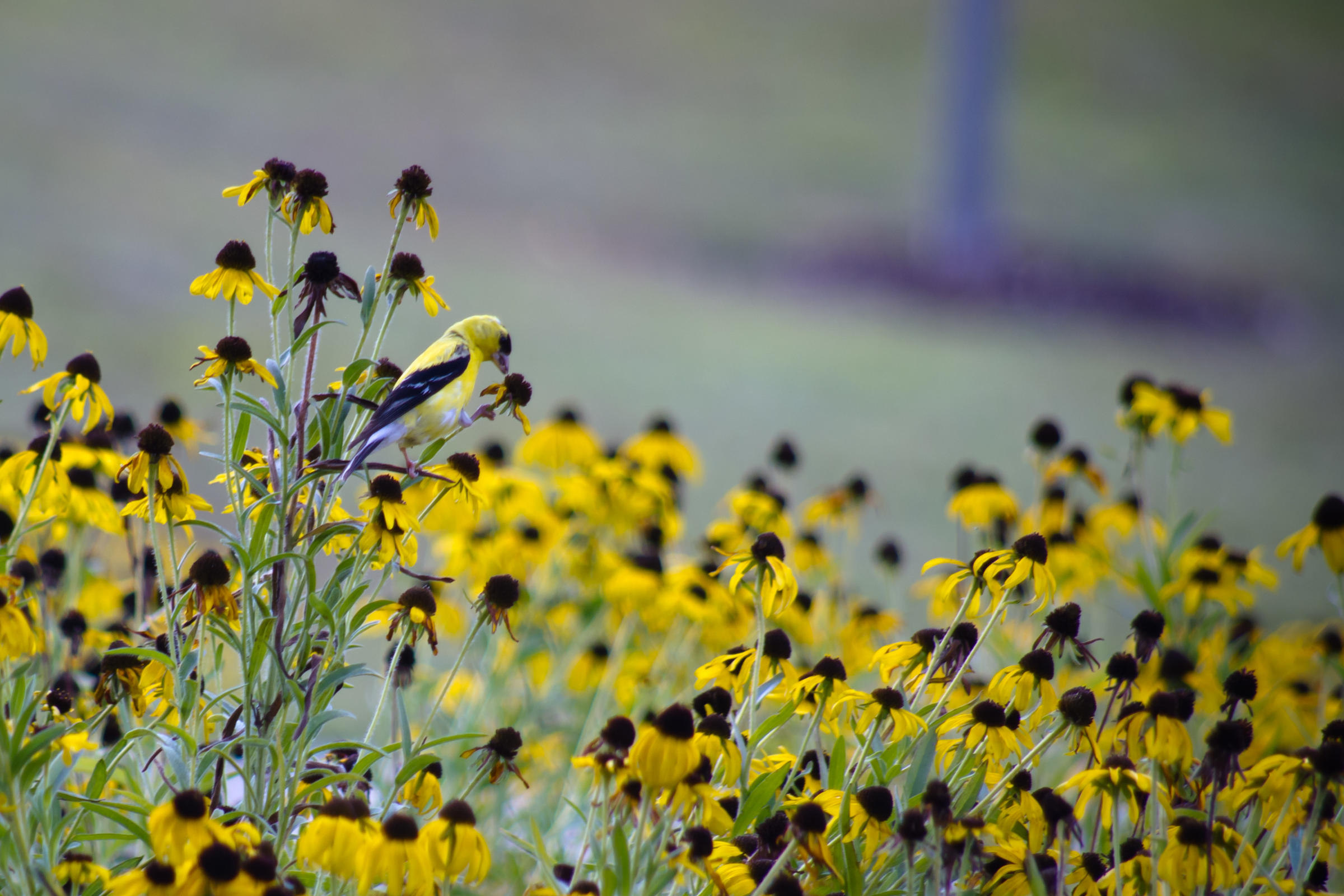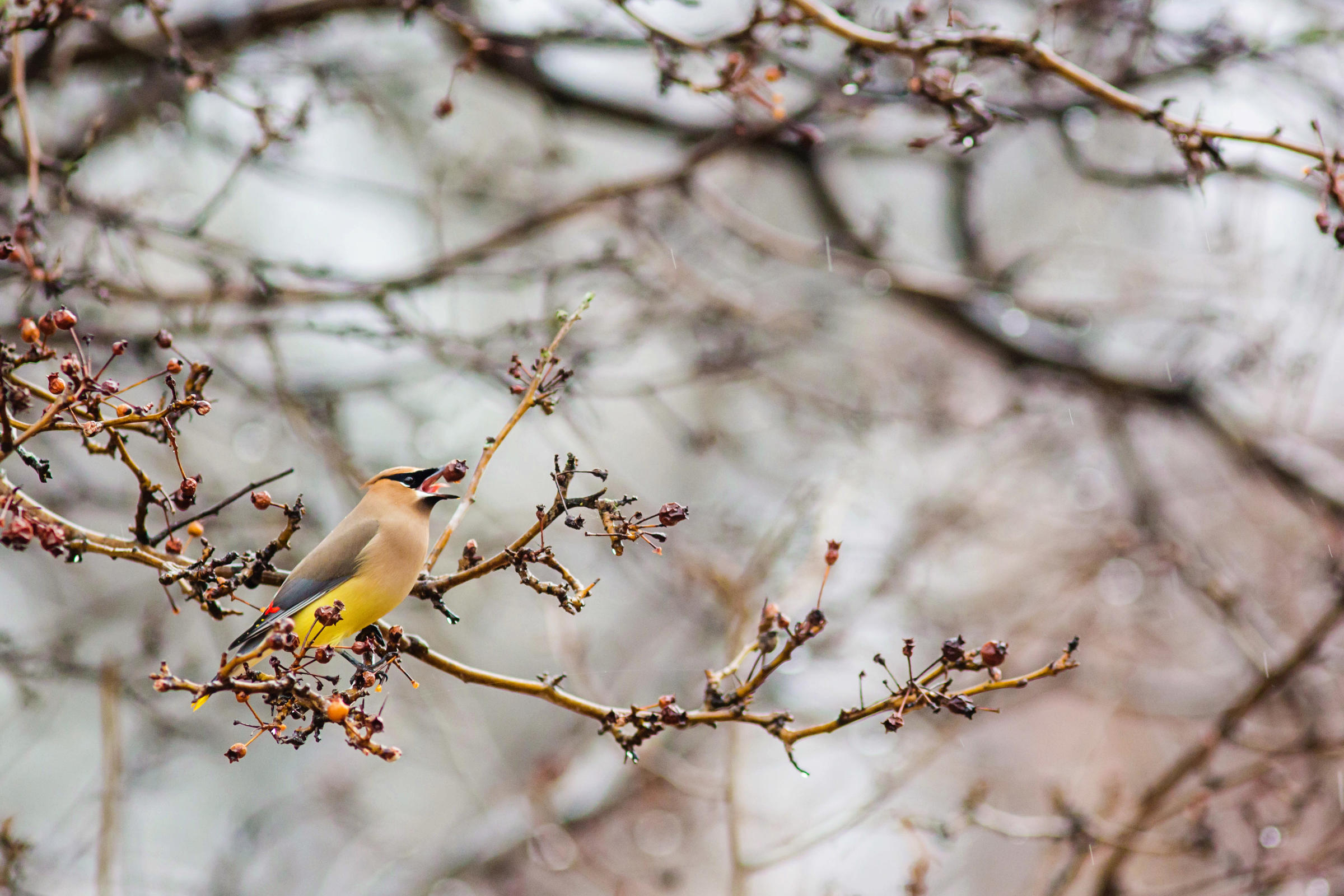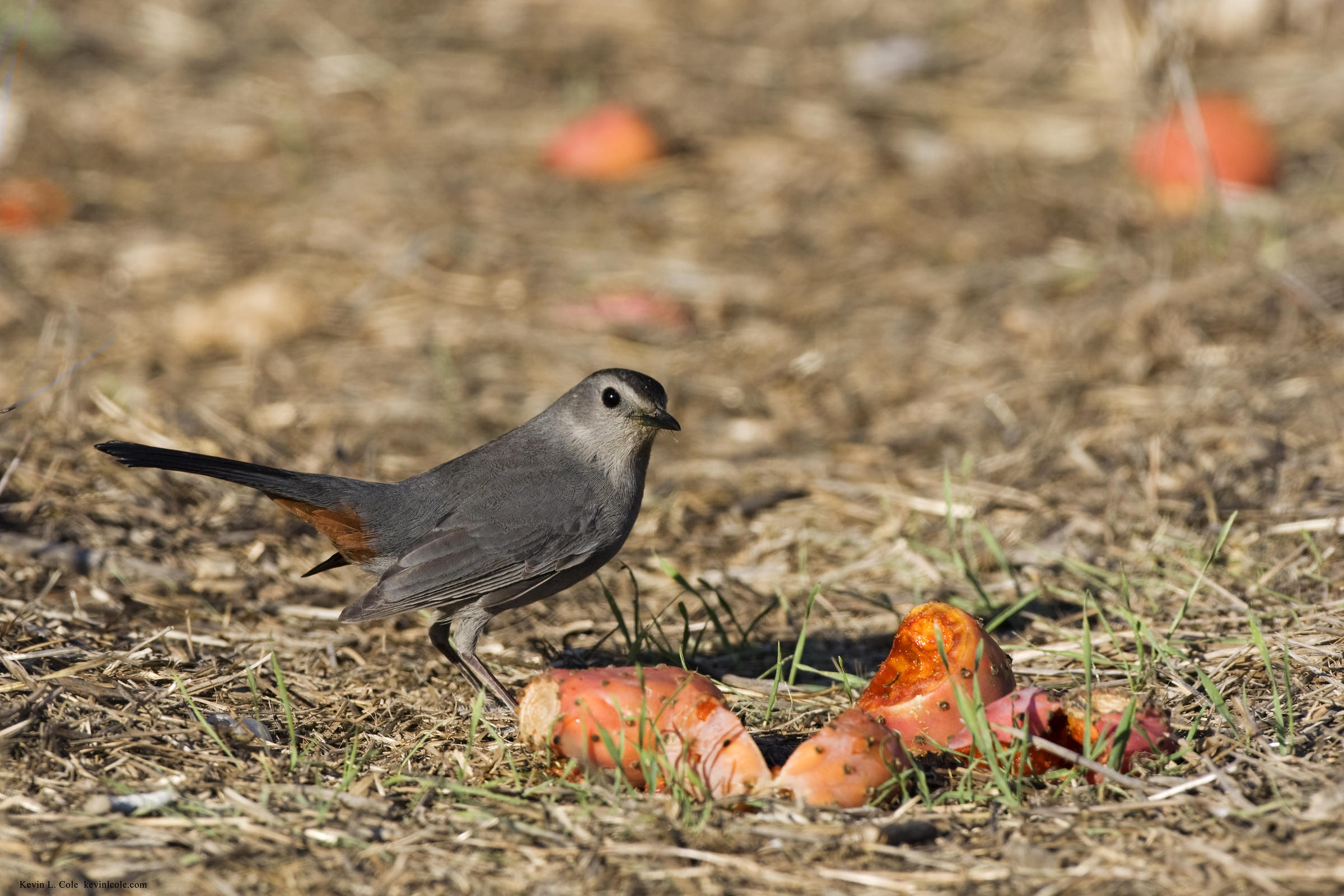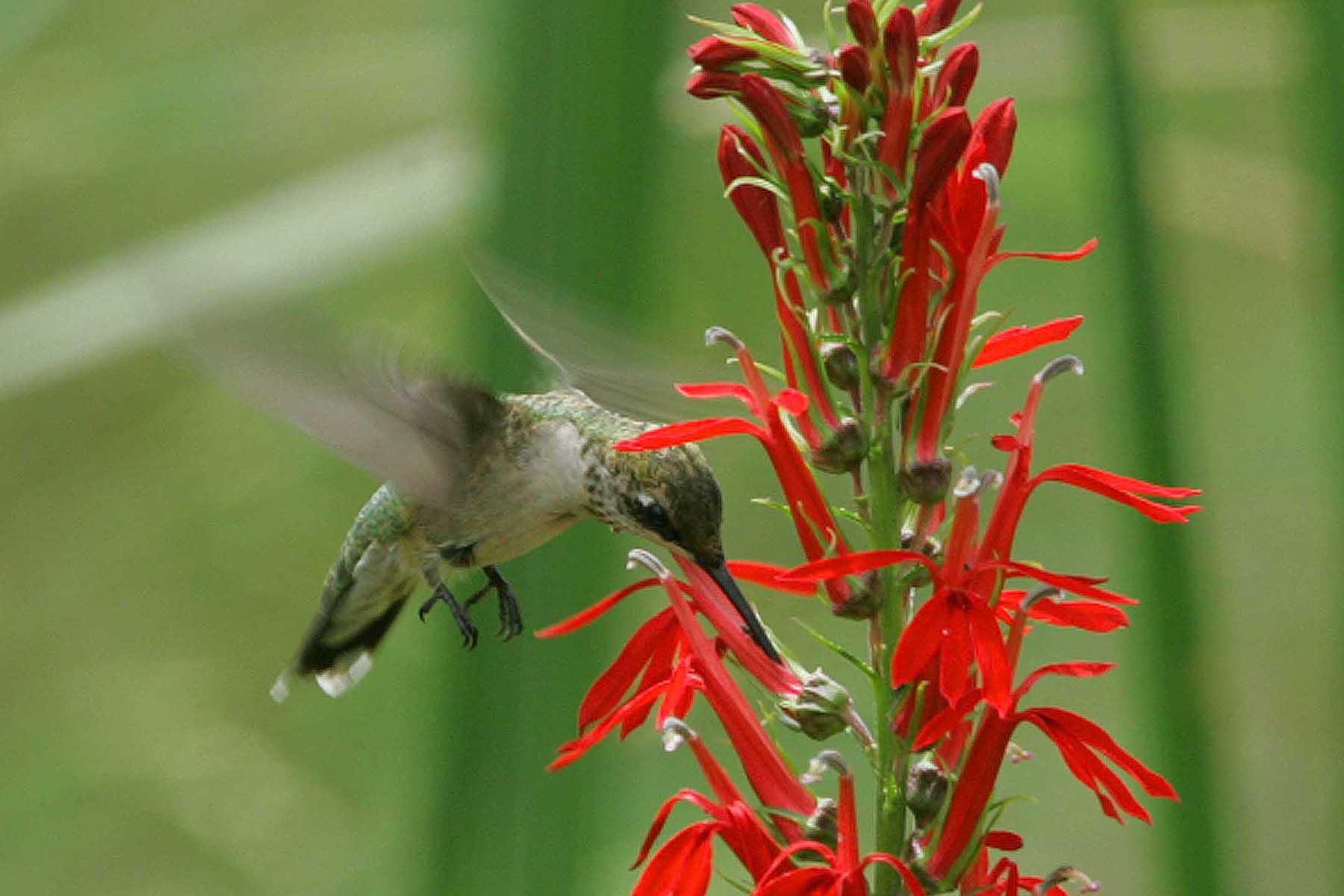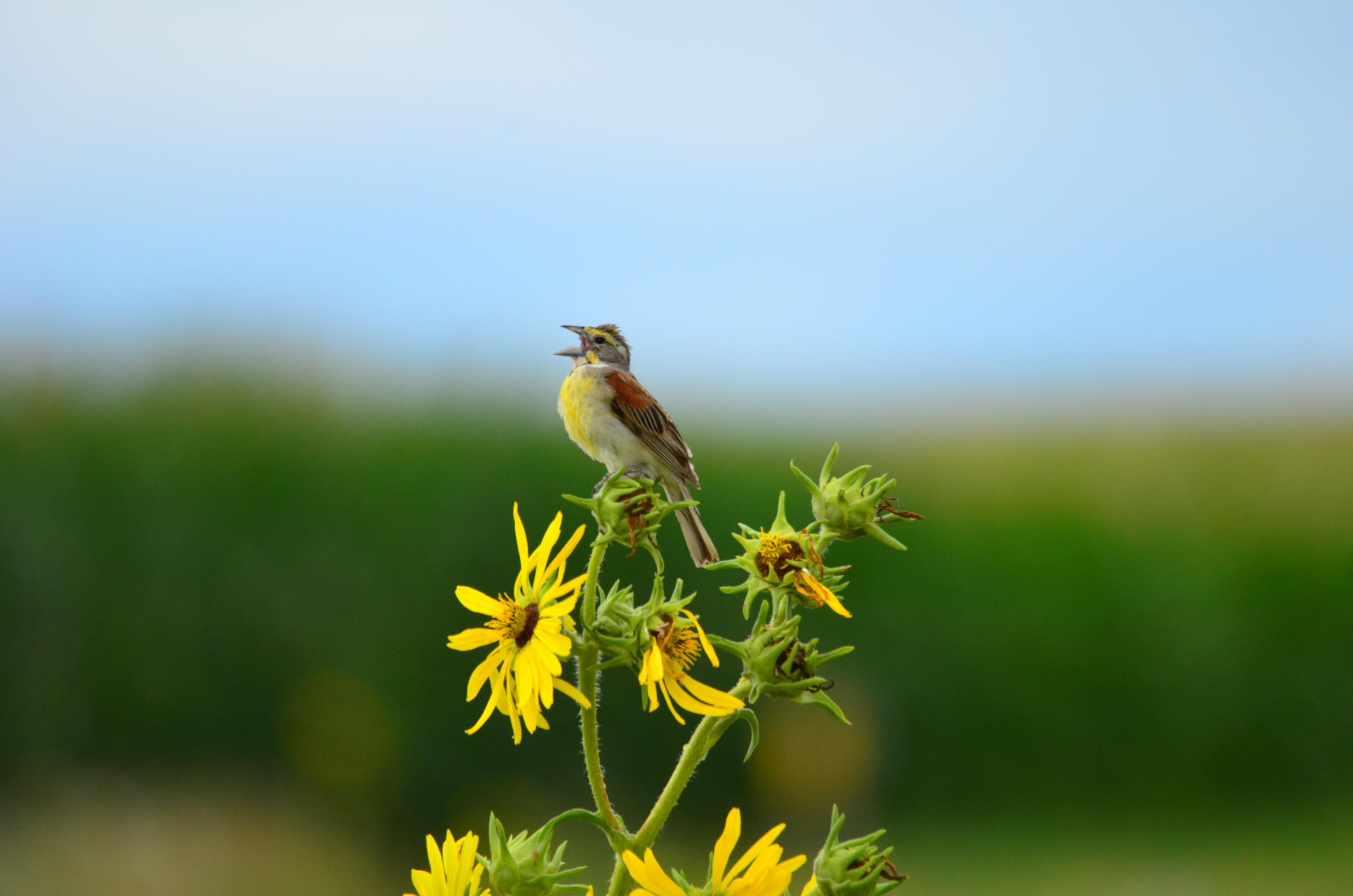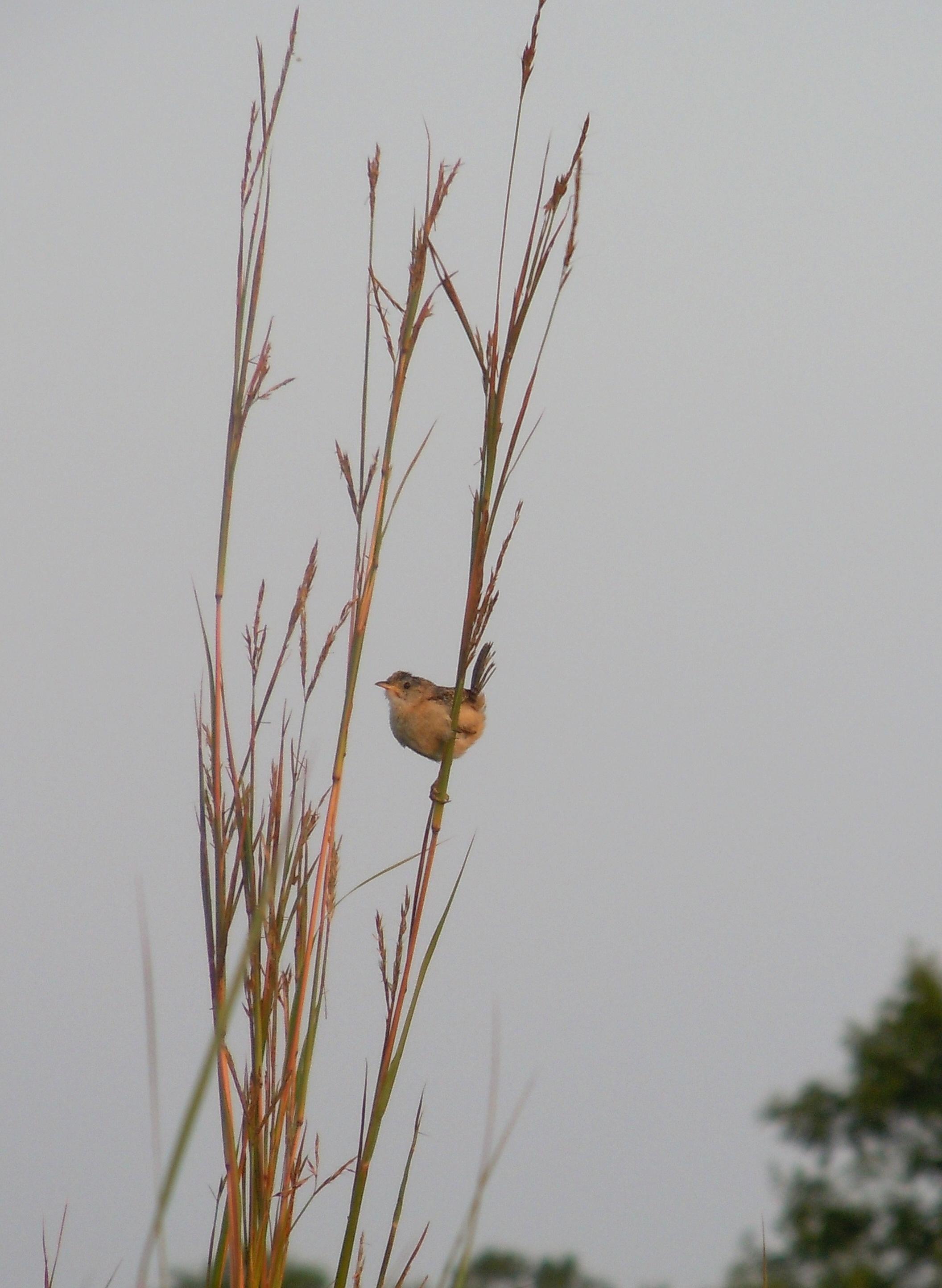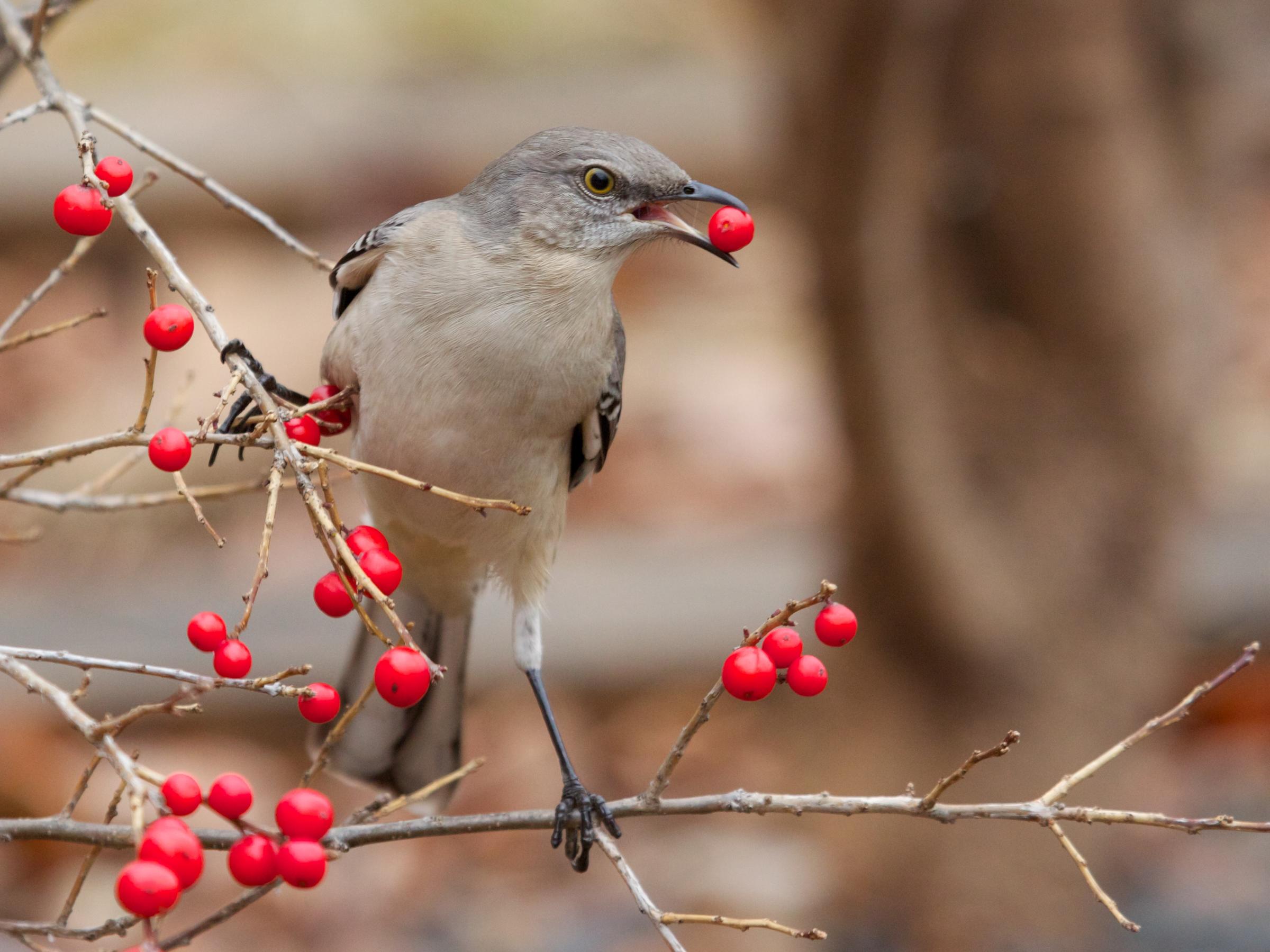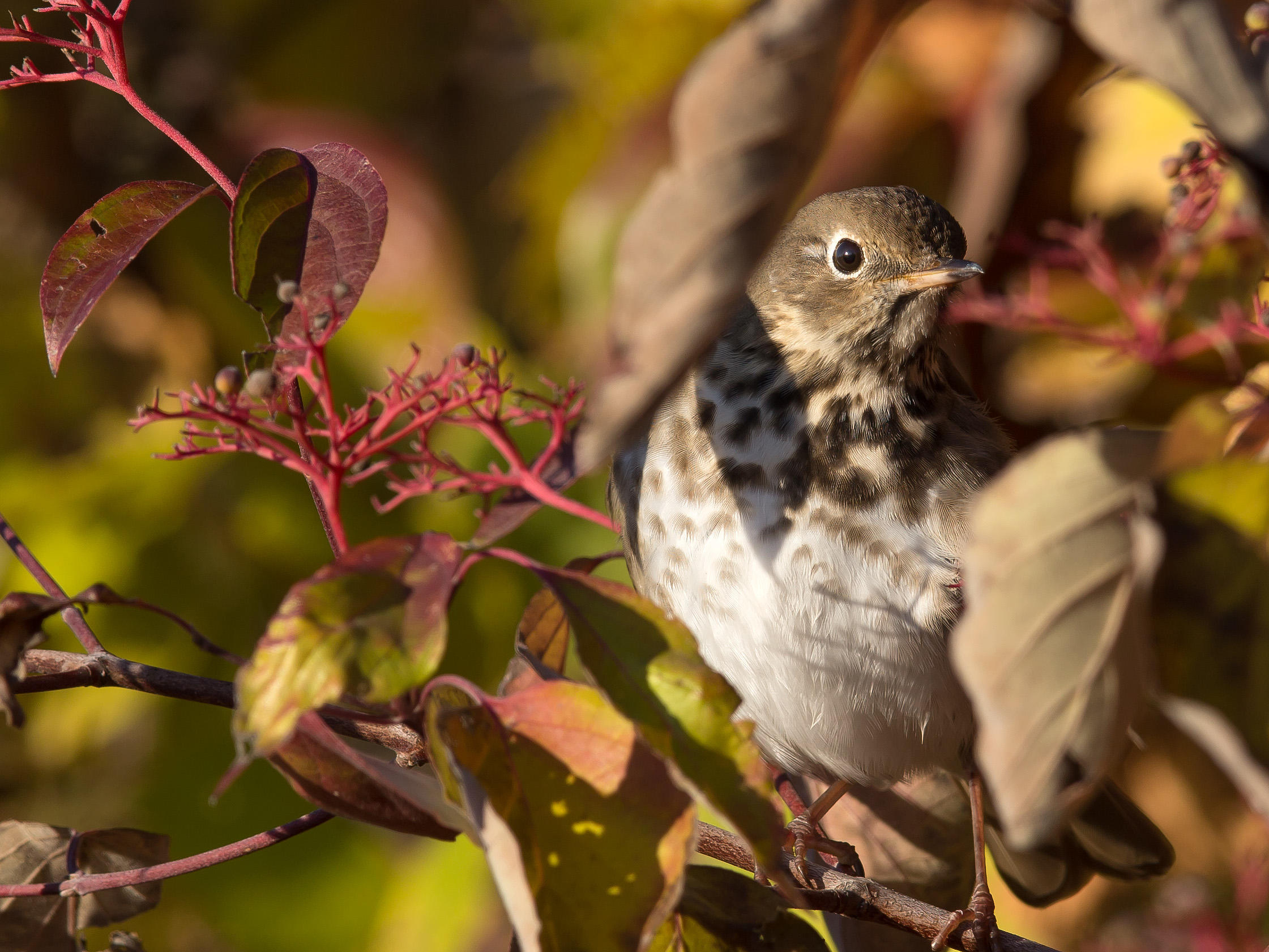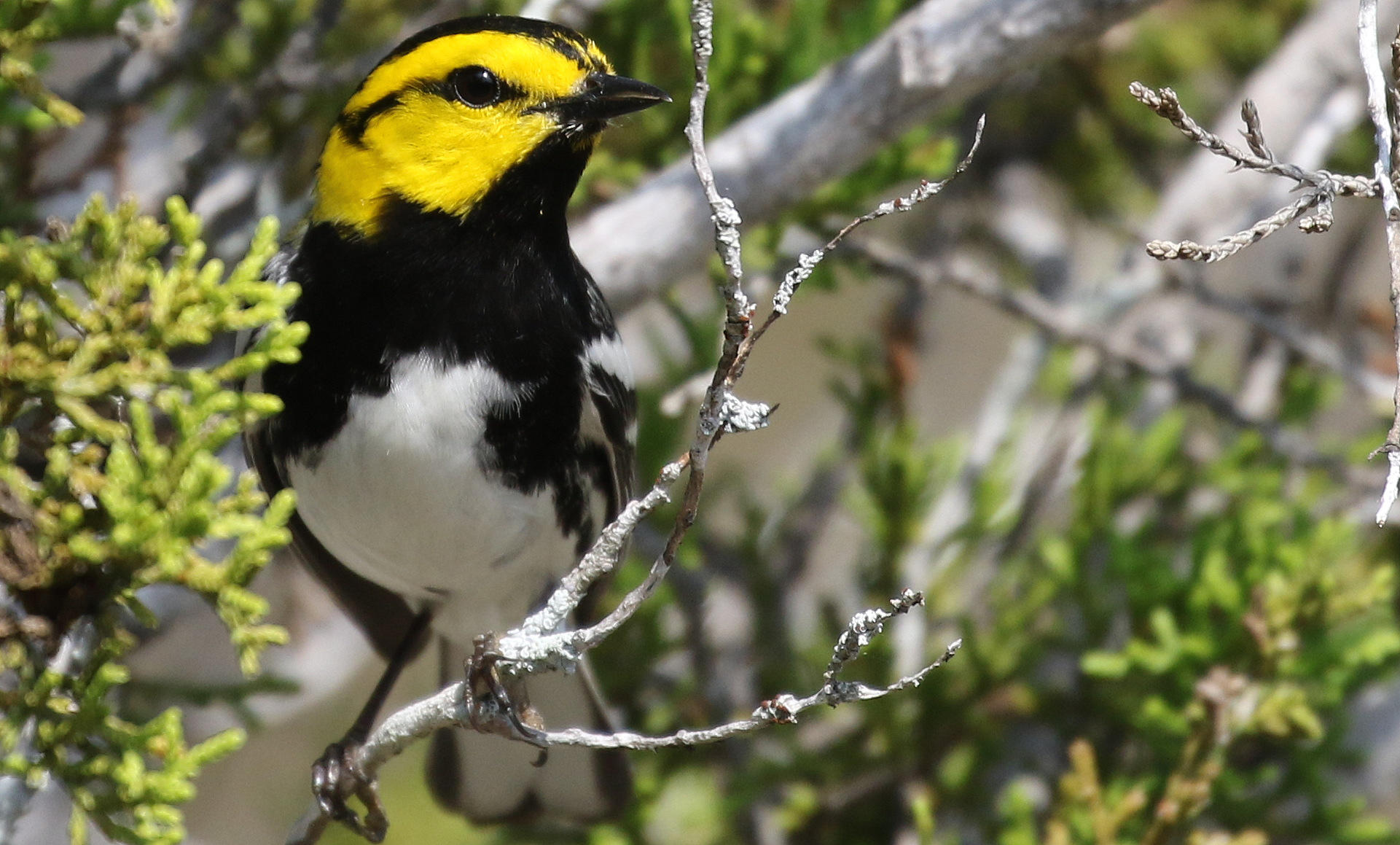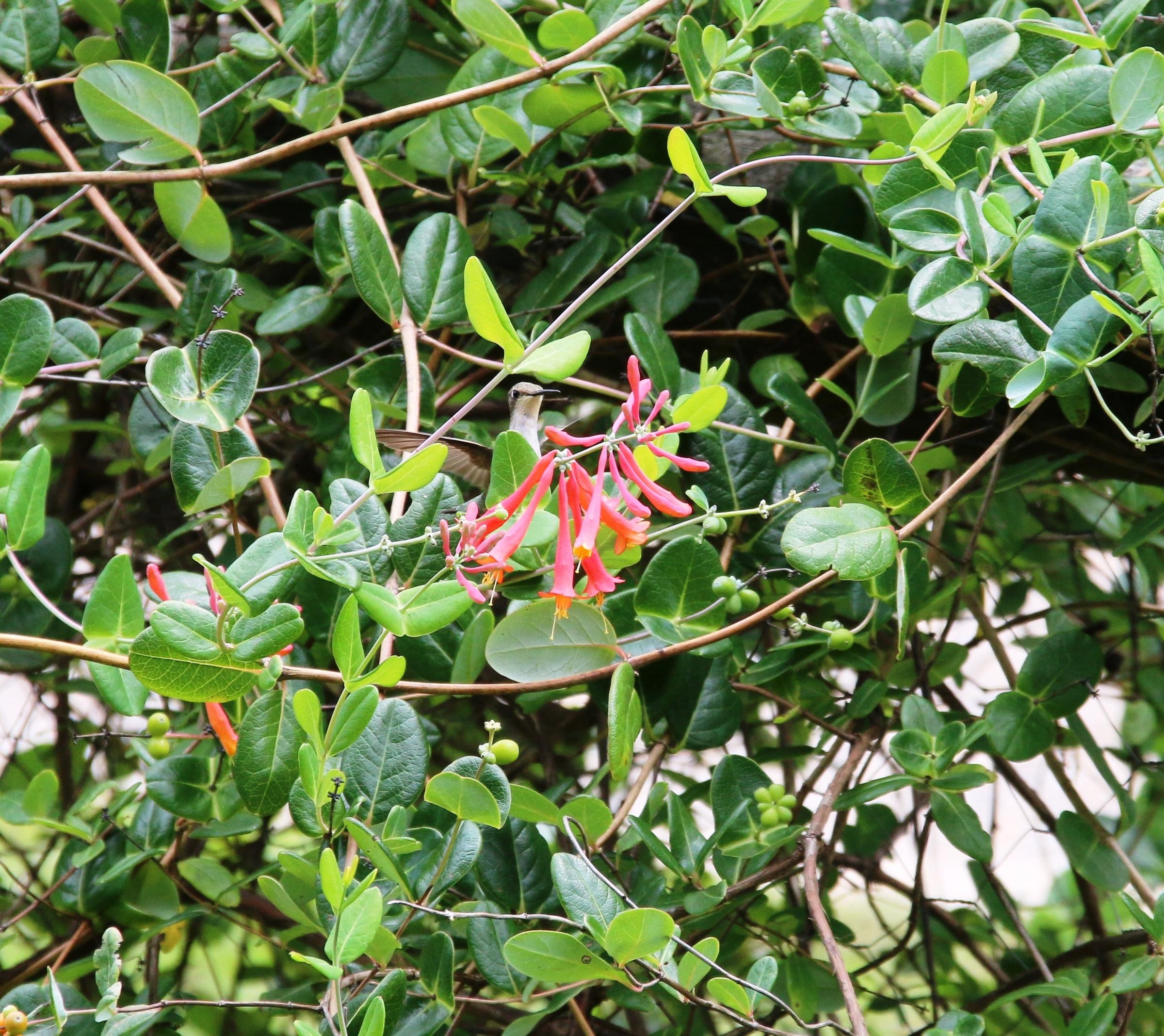Plants for Birds
By replacing our conventional landscaping with gardens featuring native plants, we can restore these vital habitats and create spaces for birds within our own backyards.
A native plant is one that occurs naturally in the region in which it evolved. Owing to this long-term relationship with a geography, native plants are the foundation upon which healthy ecosystems depend. Native plants have co-evolved complex relationships with native birds, insects, and wildlife, and removing these native plants severs critical ecological connections and webs. Replacing native plants with exotic plants from other continents/regions disrupts this fragile web of connections, as many of our native insects cannot forage on these exotics. Moreover, many exotic plants become invasive pests, outcompeting native plants and further harming our ecosystems. While physical destruction of habitat is an enormous issue, most people don’t realize that many of our preserved green spaces do not support the wildlife that depend on them due to exotic plant invasion.
Texas provides critical habitat for approximately 632 of our 914 North American bird species. These birds depend on our native plants to provide them with various sources of cover, nesting sites, and food, especially the insects most birds rely on to feed their young. One native oak tree can support over 500 species of caterpillars, while most Asian alternatives only host up to 5 species. The presence of one native tree in the place of an exotic can make a significant difference, especially when you consider that a pair of chickadees must find 6000 to 9000 caterpillars to raise a single clutch.
As our urban areas continue to grow, the natural areas that remain will not be large enough to support our bird populations. We can attempt to counteract this issue by simply choosing native plant species for our backyards instead of exotics. Learn more about choosing native plants and the steps you can take to create a bird-friendly backyard:
Choosing Native Plants
When you decide to add native plants to your yard you should first consider your ecoregion. Texas has 12 ecoregions, each with their own list of natives. While many of the same species can be found across these lists, some plants are limited to a smaller range. Learn more about your ecoregion with our interactive map. You will want to select a wide variety of plants to provide many diverse food sources throughout the entire year. Consider adding plants that will provide food in both fall and winter, and try to add natives from all 5 of these groups:
- Larval insect hosts
- Nectar-producing
- Berry-producing
- Nut-producing
- Seed-producing
It is also important to consider a combination of evergreen and deciduous trees and shrubs in order to provide cover regardless of season and to create a multi-story landscape.
For planting ideas view the plant lists at the bottom of this page, or visit Audubon's plant database to search for plants considered native to your zipcode area and the bird species that use them.
Landscaping
You do not need to remove your existing landscaping to create a bird-friendly yard; rather, start with what you have and grow from there. Start by drawing a map of your property – include buildings, sidewalks, fences, trees, shrubs, the location of any feeders, and water sources. You will also want to note which areas of your garden are sunny or shady, plants you want to keep, and any other sites that might impact your plants such as a rocky or wet areas. Next, create a planting plan by drawing all new plants onto tracing paper that you can layer over property map. Consider the sun and water requirements of your natives when adding them to the plan, as well as ideal planting times.
Invasive Species
While many common backyard exotic plants merely lack benefits to our native fauna, there are some that actually cause harm to our local ecosystems. When deciding which of your existing plants you should keep in your landscape, consider replacing those that are invasive in Texas. You can find out more about the top invasive plants in your ecoregion here.
Birds in this Article
How you can help, right now
Join Audubon Texas Today
Becoming a member supports our local work protecting birds and the places they need.
Consider a Legacy Gift for Texas
Planned gifts and bequests allow you to provide a lasting form of support to Audubon Texas.
Subscribe to Our Newsletter
Subscribe to our newsletter for updates about Audubon Texas's conservation work, and news about our activities and local events.

